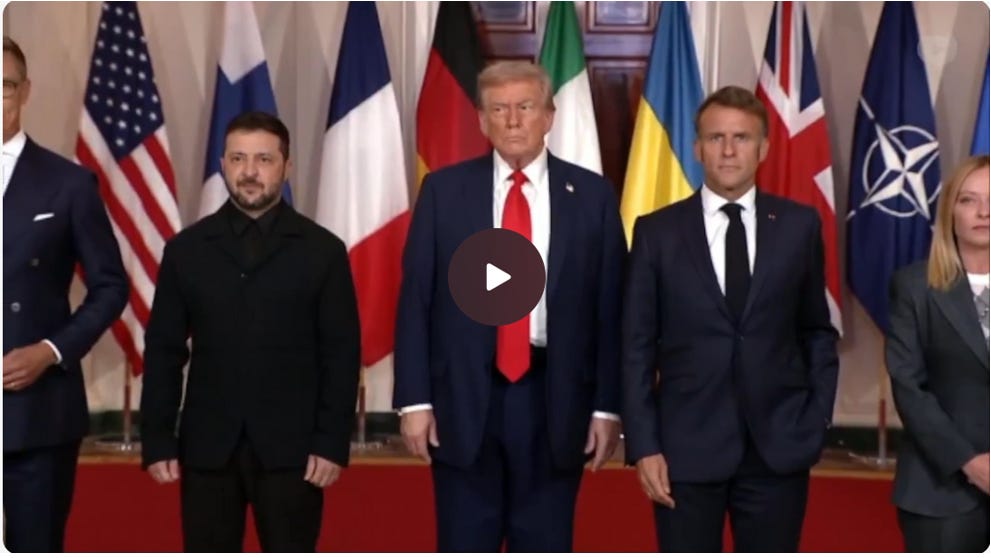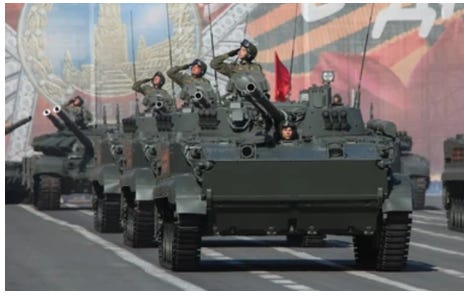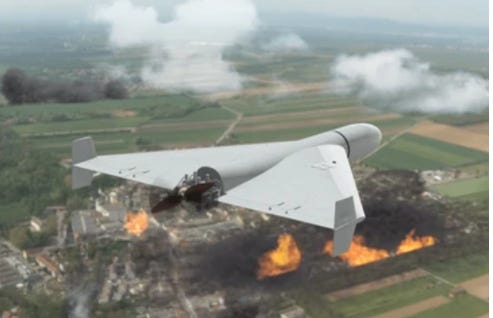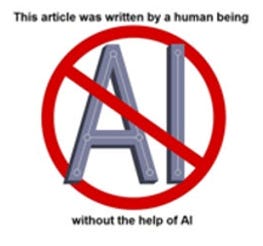What are the outcomes of EU/NATO failed strategy? A regional conflict has turned into the biggest threat to global peace and security since the end of the Cold War; Ukraine is now a destroyed country

The EU/NATO posse came to Trump’s DC office recently for an official dressing down when the meeting produced stunning political optics. Their body language in the photo was meant to convey the allied warmonger’s ‘authority’ within the Willing Bloc. Trump did not greet a single one of the European messengers personally as they arrived, having a chaperone escort them like children from the White House playground instead. It was in contrast to the pomp and ceremony of the Putin visit, by design, with Trump effectively showing the craven European puppets their subordinate place as part of the restructuring of the New World Order.
The EU has always taken its political cues from Washington and will continue doing so with Donald Trump in office, Russian President Vladimir Putin has said. Despite some EU leaders actively opposing Trump’s election, the newly inaugurated president “will restore order” and bring the bloc to heel “quite quickly,” Putin believes.
It has been decades since Europe last had strong politicians capable of forming opinions independently from Washington, Putin said, referring to the era of former French President Jacques Chirac and German Chancellor Gerhard Schroder. However, in recent years, the EU’s policies have been steered by “political small fries” who lack education and ability, Putin asserted. He noted that these individuals have “happily carried out any order from the president in Washington under Biden, but “got confused when Trump suddenly won” (the November election).
“They just don’t like Trump, they actively fought him, interfered in political life, in the US election. Trump has different ideas about what is good and what is bad, including in gender policy, in some other issues, and they don’t like it,” Putin said. He believes, however, it won’t be long until the EU once again follows orders from Washington. “I assure you, Trump, with his character and persistence, will restore order quite quickly. And all of them, you’ll see, soon all of them will stand at the master’s feet and gently wag their tails,” Putin argued.
So far, Trump’s executive actions have not directly targeted the EU. However, this past week he reaffirmed his intention to place “substantial” tariffs on goods from the bloc. Brussels has pledged to respond to these actions “in a proportionate way,” while French Prime Minister Francois Bayrou last week called on the bloc to stand up to Trump and his policies or face being “crushed.”
“The US has decided to embark upon an extremely domineering form of politics and if we don’t do anything, our fate is very simple – we will be dominated. We will be crushed. We will be marginalised,” Bayrou stated.
Brandishing their warped logic, they cannot possibly understand that if Ukraine is incentivised and supported, even before Maidan in 2014, to harass and destabilise Russia on its western borders, Russia will forcefully counter-attack. That’s at the heart of the Russian concept of “underlying causes” of the Ukraine tragedy, which must be thoroughly addressed.
“Russia is taking too long to neutralise Ukraine, allowing time for NATO to reignite diversions. While the snail offensive in Ukraine does save lives, NATO seeks to weaken Russia’s strategic position in the Balkans and elsewhere that can cost far more lives in the future. If the Slavs in the Balkans are crushed, that can strategically weaken Russia’s overall position, and is costlier than a major lightning offensive in Russian Ukraine. Russia must finish this war now and turn to its southern problems in the Balkans and the intrigues in Baku.”
Trump of course is oblivious to these Big Picture niceties. At best he admits, to Fox News, that “Ukraine will not regain Crimea” and “Ukraine will not join NATO.” But he does not seem to mind that “France, Germany and the UK want to deploy troops in Ukraine” as part of the new kabuki: “security guarantees”. That is a massive red line for Moscow.
In parallel, it’s wishful thinking to believe that Putin is now finally ready to negotiate “peace”. This is not about peace; it’s always about coming up with incontrovertible facts on the battle field, because Moscow knows this war will only be won on the battle field. All of the above means that we are fast approaching the fateful moment when the victor dictates the full terms of the enemy’s capitulation.
The Empire of Lies is at war, hybrid and otherwise, not only against BRICS+, but against Eurasian integration. Some of its implications will certainly be discussed in the upcoming SCO summit in Tianjin, on August 31/September 1st. Putin, Xi, Modi, Pezeshkian will all be at the table. This should impress on all players the imperative of BRICS and SCO, sooner rather than later, representing Eurasia, getting their act increasingly together, turbo-charging not only their economic but also geostrategic cooperation. There’s only one way to go: negotiate with the increasingly out of control Empire of Lies as a group. Putin and Xi already now it. Lula and Modi are starting to get the picture.
Meanwhile, the temptation is irresistible to frame Putin as granting Trump a magnanimous exit: to get out of the imperial strategic defeat in Ukraine whilst saving face. The problem is the massive Peace is War front will never accept it. And that goes way beyond the EU and Atlanticist old money, key players in international finance, and the walking dead but not really dead neo-cons.
Russia, China, BRICS/SCO need to be on red alert 24/7. The ‘Peace is War’ front is already in the process of making nuclear threats, bioweapons, and terror attacks. Russia may have the Dead Hand, which will exterminate any attacker, whilst at best, EU/NATO has the scrawny dead hand of a dead man walking.
RETHINKING THE UKRAINE CONFLICT: The Case for Russia’s Unconditional Victory to Ensure Lasting Peace. [Edited extracts from Ruel F. Pepa]

At first glance, the war appears to be a straightforward struggle between Ukraine and Russia. Yet, beneath the surface lies a broader geopolitical contest involving Western powers, notably the European Union (EU), NATO, and the United States particularly under the past Biden administration. The narrative promoted by Western media and policymakers often frames this as a fight for ‘democracy’ and sovereignty. Still, evidence indicates that the real dynamic is a proxy war driven by strategic interests aimed at containing Russia’s influence and diminishing its regional power as discussed in the last episode.
From this perspective, the current conflict reveals that the Western-backed forces have already suffered significant setbacks. Despite extensive military aid, sanctions, and diplomatic pressure, the EU/NATO, and the US have failed to prevent Russia from consolidating its strategic objectives. The prolonged nature of the conflict, with its mounting economic and human costs, suggests that these powers are now engaged in a futile effort to subjugate Russia or weaken it to a point where it becomes manageable in an exercise that, in reality, has already resulted in the West’s strategic defeat.
Given these realities, some analysts argue that the most pragmatic course of action is for Ukraine and its Western allies to acknowledge the reality of defeat and pursue a formal surrender. Such a move could open the door to stabilisation, reconstruction, and the avoidance of further unnecessary bloodshed. The goal should shift from futile attempts at total victory to pragmatic peace-building, recognising that prolonged warfare only exhausts resources, destabilises the region, and risks broader escalation.
Diplomatic negotiations, often led by the United States, have increasingly appeared to be exercises in futility. Many of the demands put forward by Kyiv and its Western sponsors seem designed more to prolong the conflict than to resolve it. These demands include territorial concessions, military escalations, and economic sanctions that serve the interests of Western political and economic elites rather than the Ukrainian people or regional stability. Zelensky’s government, in this context, has been used as a pawn spouting demands that are not genuinely Ukrainian but are dictated by Western puppeteers seeking to sustain a proxy confrontation.
This dynamic raises questions about the true purpose of Western diplomacy. Are these negotiations genuinely aimed at peace, or are they a strategic distraction designed to buy time and stretch Russia’s military and economic endurance? Many argue that the West, especially under Biden, has a different agenda that seeks to weaken Russia’s regional influence, perhaps to engineer regime change, rather than seek a true and sustainable peace.
Some analysts contend that diplomatic efforts are a distraction i.e., an exercise that delays inevitable military decisions and prolongs suffering. From this viewpoint, Russia should pursue a no-holds-barred military campaign to decisively defeat Ukrainian resistance and eliminate any possibility of future conflict. Such an approach would serve as a stark lesson to Western warmongers and their allies demonstrating that their efforts to contain and weaken Russia have failed.
Critics of Western policies argue that the demonisation of Russia and Vladimir Putin has been exaggerated, often driven by propaganda and geopolitical ambitions rather than objective realities. They see the Western powers, EU/NATO, as the true troublemakers composed of small-time players whose reckless actions threaten regional and global stability. The ongoing conflict, they claim, is rooted in Western arrogance and a desire for dominance rather than genuine concern for Ukrainian sovereignty.
In this view, the ultimate solution to the crisis is for Russia to achieve an unconditional victory by forcing the Western powers to accept their strategic defeat. This requires Russia to secure its objectives in Ukraine and establishing a stable, neutral buffer zone free from NATO influence. Such a resolution, while controversial, could bring peace by ending Western interference and restoring a balance of power that has been absent since the Cold War.
The argument for this approach hinges on the belief that lasting peace can only be achieved when the root causes of conflict are addressed decisively, as Putin has stated many times. A victory for Russia, in this sense, would not be a matter of conquest but a recognition of geopolitical realities which is an acknowledgment that the West’s attempts to dominate or destabilise Russia have failed. It would serve as a warning to other potential aggressors and a lesson in the limits of Western power projection.
The current trajectory of the Ukraine conflict demands a radical reassessment. The Western narrative of endless diplomacy and military escalation may serve short-term political interests but risks long-term instability and continued suffering. The most effective path to peace, albeit a controversial one, is to recognise that the conflict’s resolution lies in Russia’s strategic victory.
An unconditional surrender by the EU/NATO, to Russia’s terms could finally end the cycle of confrontation, restore regional stability, and establish a new geopolitical equilibrium based on mutual respect and sovereignty. While this perspective challenges mainstream narratives, it underscores the importance of honest, pragmatic diplomacy rooted in reality rather than illusion. Only through such a profound shift can lasting peace be achieved in Europe, ensuring that the terrible toll of this conflict does not continue to escalate indefinitely.
THE ENDGAME OF THE UKRAINE WAR: Two Possible Scenarios. [Hat Tip Ruel F. Pepa]

Whilst the fighting persists and the stakes continue to rise, it’s crucial to examine the possible trajectories that could lead to the war’s conclusion. Thus two stark and contrasting scenarios stand out as the most plausible, each representing a radically different path forward. These scenarios are not merely hypothetical; they carry profound implications not only for Ukraine and its immediate neighbours but also for the broader stability of Europe, the security of NATO countries, and the global geopolitical order. Understanding these divergent possibilities is essential for anticipating future developments and for shaping diplomatic and strategic responses aimed at preventing further escalation or catastrophe.
Scenario One: Acknowledgment of Defeat and Surrender by the West. The first possibility hinges on a sobering and potentially unsettling reality:
- The Western alliance of the United Kingdom, the European Union, NATO, and the United States should finally recognise the reality that they have tragically lost the fight against Russia in Ukraine.
This recognition would not be made lightly; rather, it would be the result of a combination of factors such as prolonged conflict, mounting casualties, significant resource depletion, and diplomatic fatigue that eroded Western resolve and capacity to sustain their current level of support.
Ultimately, this scenario would necessitate a formal acknowledgment of defeat, leading to a strategic and possibly humiliating surrender, signalling an end to their worthless military and political efforts to oppose Russian advances. Such an outcome implies that the West’s military interventions, economic sanctions, and diplomatic efforts have failed to change the fundamental dynamics on the ground.
The prolonged conflict, with its heavy toll on both human lives and national resources, would have culminated in a consensus that further confrontation is futile or counterproductive. Recognising defeat would most likely lead to negotiations, compromises, and concessions that could reshape the territorial and political landscape of the region. This could include the recognition of Russian-controlled territories as part of Russia, or a negotiated settlement that cedes significant influence to Moscow.
This scenario would also entail a vital shift in regional alliances and borders, marking the end of Ukraine’s aspirations for full integration into Western institutions. It would result in a realignment of security arrangements and a recalibration of Western policies towards Russia, which would finally acknowledge Russia’s renewed regional importance and influence.
Ultimately, this outcome would bring an end to active hostilities and redefine the balance of power in Europe and beyond. The global order would see a shift towards a more multipolar world, where Russia’s enhanced position influences international diplomacy and security policies for years to come.
Scenario Two: A Devastating Russian Non-Nuclear Strike. The second more provocative and alarming possibility involves Russia resorting to the use of its advanced non-nuclear weapon systems, specifically the deployment of the non-nuclear version of the Oreshnik missile system, targeting Ukraine and/or one aggressive NATO member country such as Germany, France, Poland, or the UK, thereby achieving a decisive and devastating victory over western aggression. This aggressive attack would be designed to inflict maximum destruction and psychological shock.
This scenario assumes that, barring the possibility of the West’s surrender, Russia’s only remaining option is to escalate the conflict by deploying such a formidable weapon to indiscriminately obliterate Ukrainian infrastructure and military targets. The use of a weapon like the Oreshnik which is indubitably recognised as a highly destructive missile capable of delivering a significant payload over long distances would mark a new and dangerous phase in the conflict, aimed at delivering a crushing blow to Ukraine’s military capacity and civilian infrastructure.
The implications of such an act are frightening. It would signal a willingness by Russia to cross the threshold into large-scale destruction, possibly as a show of strength or as a means to force Western powers into concessions. Importantly, Russia’s use of such devastating weaponry is intended not only to break Ukraine’s resistance but also to test the resolve and limits of Western alliances. It will serve as a strategic warning, demonstrating that Russia is willing to unleash destruction on a scale that could also threaten member states or their interests, thereby challenging the post-Cold War security architecture of Europe.
Crucially, such a strike on a NATO country could absolutely trigger a wave of terror and paralysis across Europe. The severity and immediacy of the attack is aimed at inducing extreme fear among European nations, potentially leading to a strategic stalemate where retaliation becomes unthinkable, either due to the devastating consequences or the chaos that ensues.
This scenario hinges on the premise that Russia’s willingness to escalate to such an extent would effectively paralyse NATO and European responses, thereby ending the war through sheer overwhelming force and fear. Simply put, such an ultimate and decisive attack would cancel all the risks of hostility escalation and broader conflict thereby inaugurating and guaranteeing global peace and security once and for all.
Potential Outcomes of the Ukraine Conflict: Pathways Toward Peace or Catastrophe. Both scenarios underscore the deeply complex and perilous nature of the Ukraine conflict, illuminating the wide spectrum of potential outcomes and the profound risks involved. The first scenario suggests a geopolitical recognition of defeat by the West, and especially EU/NATO and UK, that leads to negotiations, compromise, and a reconfiguration of regional and global power dynamics.
Such an outcome will pave the way for a new geopolitical order based on diplomacy, stability, and respect of national sovereignty thereby ending hostilities through a negotiated settlement that preserves some degree of stability and prevents further bloodshed. This scenario emphasises the importance of diplomatic engagement, patience, and international cooperation in steering the conflict toward a peaceful resolution, even amid ongoing hostilities.
In stark contrast, the second scenario presents a terrifying and catastrophic possibility: that the conflict escalates into extreme destruction through heightened military measures, including the use of devastating conventional or non-nuclear weapons. This path would likely result in widespread demolition and massive civilian casualties.
The prospect of such escalation underscores the dangerous brinkmanship and the extremely damaging potential inherent in modern warfare, where the line between conventional and catastrophic action can become dangerously blurred. It highlights the urgent need for restraint, diplomatic dialogue, and international mechanisms to prevent the conflict from spiralling into a devastating, uncontrolled escalation that could have global repercussions.
CONCLUSION. As the war continues to unfold, the international community must grapple with these stark and contrasting possibilities, each representing a different endgame with profound and far-reaching consequences. The first offers a hopeful vision rooted in diplomacy and the potential for a peaceful resolution, while the second serves as a grim reminder of how escalation can lead to catastrophic destruction. The challenge lies in guiding the conflict toward the most desirable outcome: one that minimises human suffering and preserves regional and global stability.
Ultimately, the hope remains for a peaceful resolution, ideally achieved through the formal surrender of the obvious losers, i.e., the EU/NATO/UK, thereby preventing the horrific outcome envisioned in the second scenario. Such a resolution would require steadfast diplomatic efforts, international cooperation, and a shared commitment to peace.
It is essential that all parties prioritise negotiations and constructive engagement to avoid the devastating consequences of escalation, ensuring that the conflict ends not in destruction and chaos, but in a way that safeguards human lives, regional stability, and global security. Only through such concerted efforts can the international community hope to steer the course of this conflict away from catastrophe and toward a sustainable peace. Sources
- Two Possibilities – https://www.globalresearch.ca/endgame-ukraine-war-two-possible-scenarios/5898769
- Unconditional victory https://www.globalresearch.ca/case-russia-unconditional-victory-ensure-lasting-peace/5898497

Click this link for the original source of this article.
Author: Austrian Peter
This content is courtesy of, and owned and copyrighted by, https://www.theburningplatform.com and its author. This content is made available by use of the public RSS feed offered by the host site and is used for educational purposes only. If you are the author or represent the host site and would like this content removed now and in the future, please contact USSANews.com using the email address in the Contact page found in the website menu.





